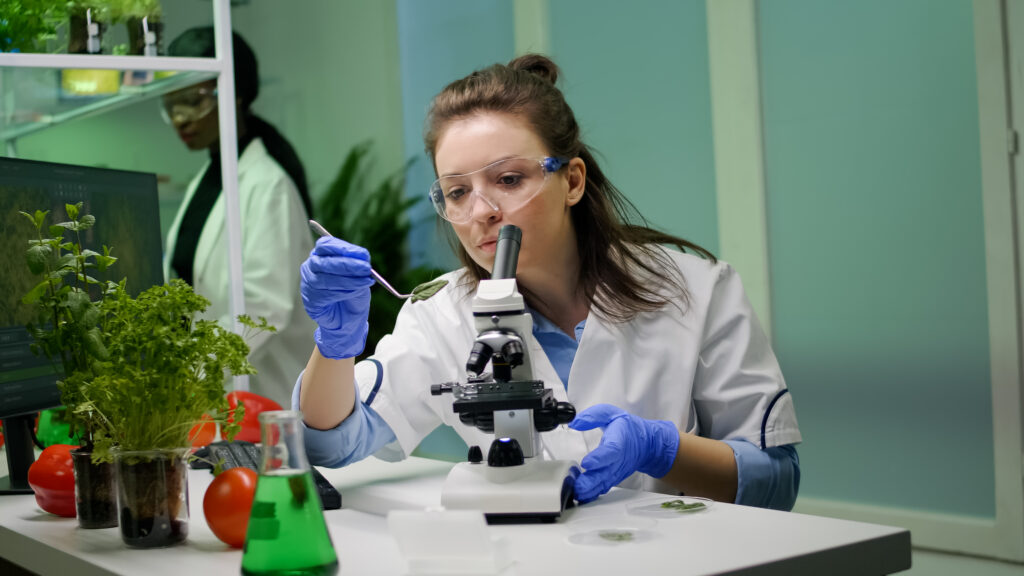Food shelf life testing is a crucial procedure in the food industry that guarantees the safety and high quality of products throughout their intended use. By following this procedure, food producers, sellers, and consumers can continue to believe in the goods they create, market, and eat. We'll review the principles of food shelf life testing in this blog, including its significance, how it's done, what affects shelf life, and how the food business uses it.
What is Food Shelf Life Testing?
The scientific process of food shelf life testing establishes how long a food product may be stored before it becomes unsafe or unappealing to consume. This testing evaluates the food's nutritional value, safety (microbial and chemical stability), and sensory features (taste, smell, texture, and appearance). Finding the time when food retains its intended quality under particular storage circumstances is the aim.
Importance of Food Shelf Life Testing
Testing food shelf lives is mostly done to make sure consumers are safe. Eating food that has gone bad can result in foodborne illnesses brought on by microbial growth, spoiling, or toxic compounds. Furthermore, reliable shelf life information lowers food waste since it deters consumers from throwing food out too soon if they believe the label.
Testing for food shelf life is also essential for regulatory compliance. Food producers have to abide by several national and international laws, many of which call for verified shelf-life information. Precise shelf life testing guarantees that goods fulfill legal requirements and helps avert possible legal and financial fallout.
Factors Influencing Food Shelf Life
Several factors influence the shelf life of food products. Understanding these factors :
- Temperature: Temperature fluctuations can accelerate spoilage and microbial growth. Proper storage conditions are critical for maintaining shelf life.
- Humidity: High humidity can promote mold growth and spoilage, while low humidity can cause dehydration and texture changes.
- Light Exposure: Exposure to light, especially UV light, can cause oxidation and degradation of certain food components, affecting flavor, color, and nutritional value.
- Oxygen: Oxygen exposure can lead to oxidation, rancidity, and spoilage. Packaging that limits oxygen exposure, such as vacuum-sealed or nitrogen-flushed packaging, can extend shelf life.
- Microbial Load: The presence of microorganisms, such as bacteria, yeast, and molds, significantly impacts shelf life. Proper sanitation and microbial testing are crucial to control microbial growth.
- Packaging: The type and quality of packaging material can affect shelf life. Packaging should provide a barrier to moisture, oxygen, and light, and be suitable for the food product.
Methods of Shelf Life Testing
Shelf life testing of food uses a variety of techniques to assess the safety and quality of food products over time. Among these techniques are:
Check out our related blog on this topic

1. Real-Time Shelf Life Testing: This technique entails keeping the food product in the suggested storage space and testing it regularly until the end of its shelf life. Although this method yields the most accurate findings, it can be expensive and time-consuming
2. Tests for Accelerated Shelf Life: To hasten the aging process, accelerated testing entails storing the food product in environments with increased humidity and temperature. Although this method yields faster findings, real-time shelf life prediction may not always be correct.
3. Microbial testing: This technique evaluates whether microorganisms are present in the food product and how quickly they are growing. Frequent microbiological testing is beneficial.
Procedure for Food Shelf Life Testing
To achieve accurate and trustworthy results, there are multiple processes involved in conducting Shelf life testing :
1. Product Selection: Select the food item that will be examined, taking into account its packaging and anticipated storage environment.
2. Storage Conditions: Specify the temperature, humidity, and amount of light that the product will be exposed to while it is being tested.
3. Sampling: To assess a food product's quality and safety over time, gather samples of it at prearranged intervals.
4. Data analysis: Examine the gathered information to spot patterns and ascertain the product's expiration date. Interpreting the results can be aided by statistical tools.
The Role of Testing of Shelf in the Food Industry
Food shelf life is integral to the food industry, influencing various aspects of production, marketing, and consumer safety:
- Product Development: During product development, shelf life testing helps manufacturers select appropriate ingredients, formulations, and packaging to achieve the desired shelf life.
- Quality Control: Regular shelf life testing ensures that products consistently meet quality and safety standards. It helps identify potential issues before products reach consumers.
- Regulatory Compliance: Food manufacturers must comply with regulatory requirements regarding shelf life labeling and safety. Shelf life testing provides the necessary data to meet these standards.
- Marketing and Labeling: Accurate shelf life information builds consumer trust and enhances brand reputation. Clear labeling helps consumers make informed decisions and reduces food waste.
- Supply Chain Management: Shelf life testing helps optimize inventory management, reducing the risk of spoilage and ensuring that products remain fresh throughout the supply chain.
Conclusion
Testing for shelf life for food is a vital process that ensures the safety, quality, and longevity of food products. By understanding the basics of food shelf life testing, manufacturers can make informed decisions about product development, packaging, and storage conditions. Accurate shelf life information not only protects consumers from potential health risks but also contributes to reducing food waste and maintaining regulatory compliance. As the food industry continues to evolve, advancements in shelf life testing methods and technologies will play a crucial role in meeting the growing demands for safe and high-quality food products.

